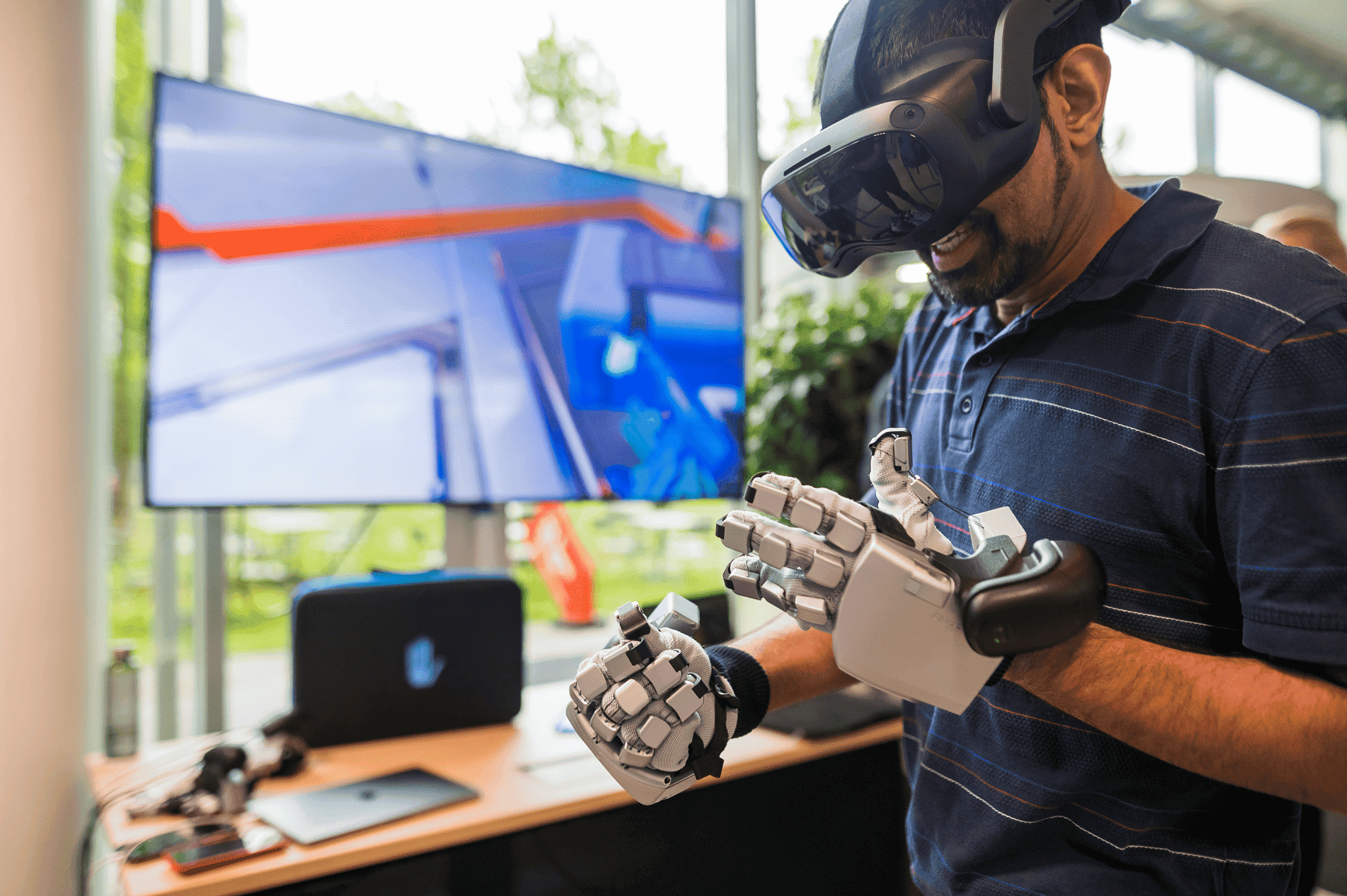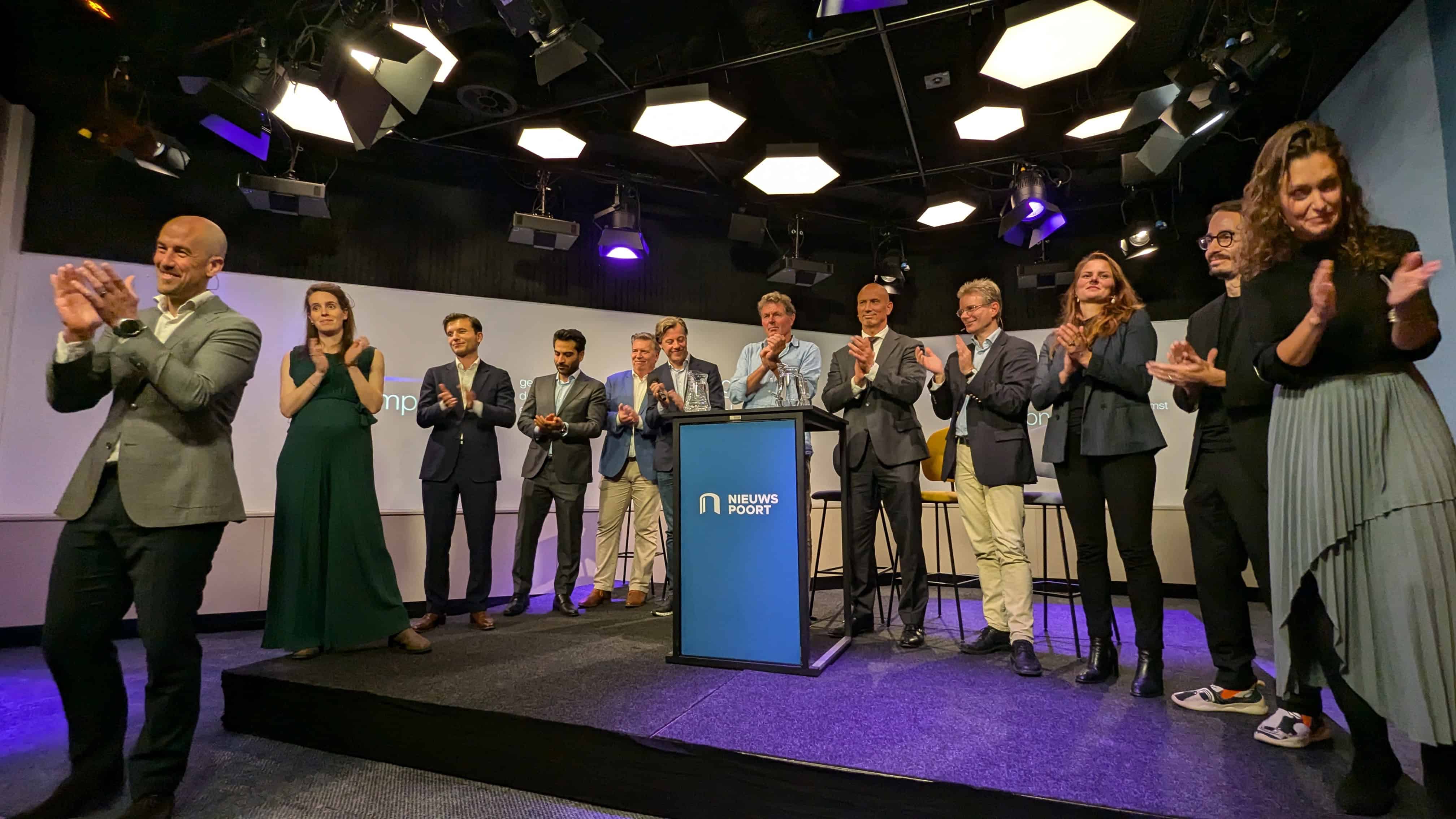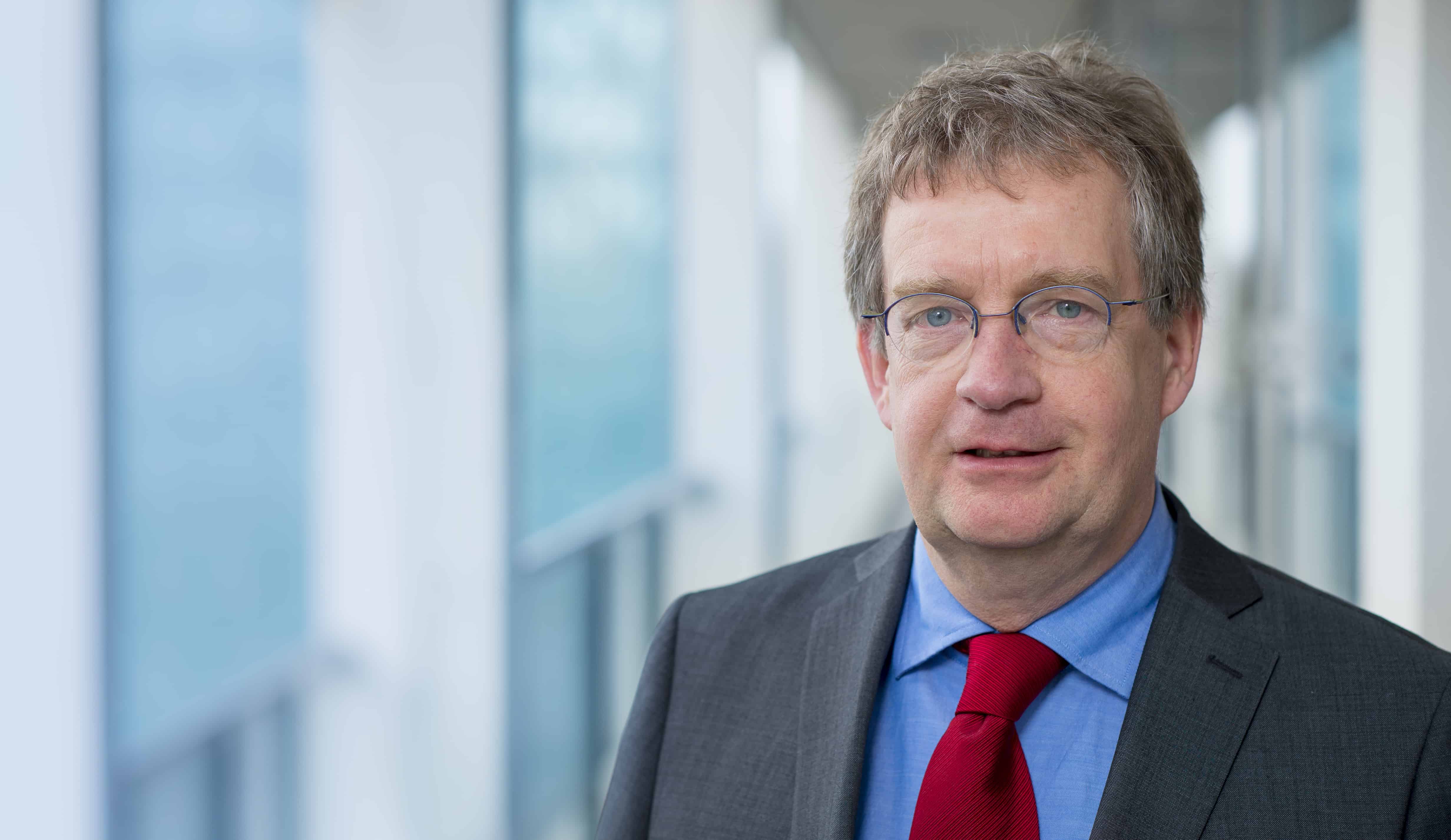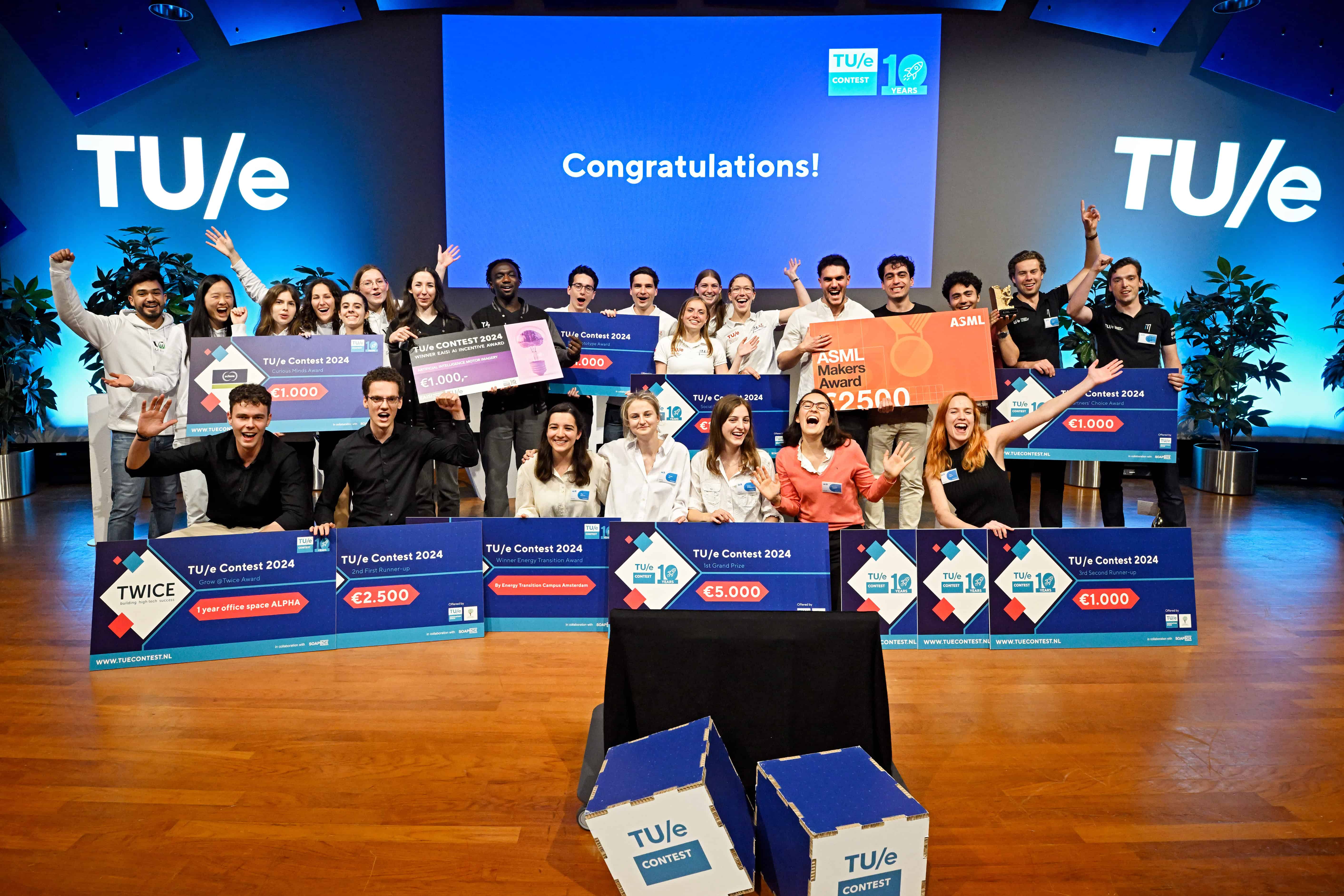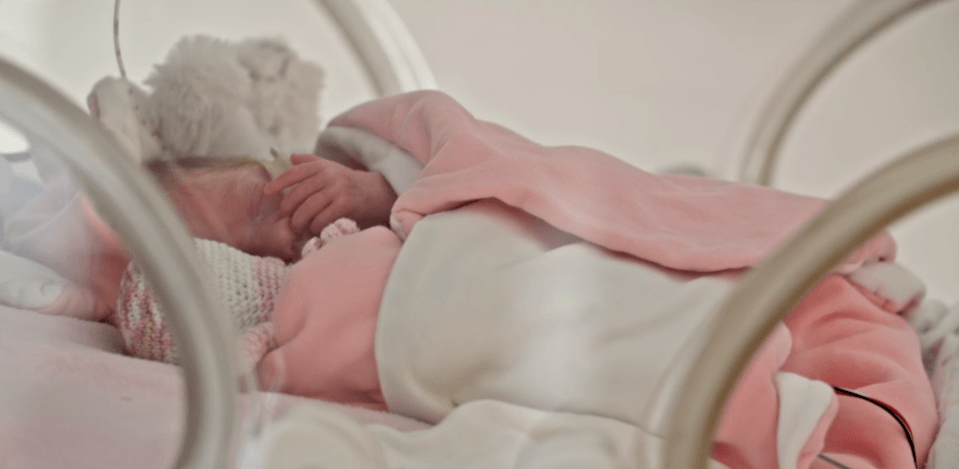
Very carefully, Sylvie Claes walks into a baby room of the Maxima Medical Center. It’s the first time she sees ‘her’ Hugsy being used. In the bed in front of her lies a mother with on her chest a premature baby wrapped in a blanket. The blanket helps to build a bond between the mother and the incubator baby. Because the mother can’t always be in the hospital with her newborn baby, Claes and her team members have created Hugsy. By putting the scent of the mother in the fabric and through a special speaker that simulates the mother’s heartbeat, the baby has the feeling that she’s always around. Hugsy simulates and makes kangeroo care easier. Kangeroo care is a way of taking care of premature babies, the idea behind it is that babies develop better and faster when they’re held skin to skin by the parents.
It is very special to see something you created more than a year ago, being used.
With a tilted head, Claes watches the baby and the mother. She deliberately keeps some distance, but the mother reassures her and beckons her to come closer. She enthusiastically tells about the use of Hugsy. “I really believe that the scent and the heartbeat are doing something for the baby.” Claes nods, and all she can do is smile. She’s a little overwhelmed after the visit to the mother and the baby. “It is very special to see something you created more than a year ago, being used. It is such a small baby, you come very close. I felt like some sort of intruder, these are intimate moments in the personal space. I felt like I didn’t belong there, but the mother was extremely cool.” Claes smiles proudly. “It was surely different from a doll.”
Claes hopes to give a professional sequel to something that started as a study assignment. She’s participating in the accelerator program of HighTechXL together with her team members/fellow students Miquel Cabral Guerra, Jiachun Du and Lisa Malou Smits. “I am the only one who’s working full time in our team, the others are primarily focussing on finishing their course.” She chooses this step consciously: “During a business class I used Hugsy as a case to make a company out of it. I soon had the feeling that this could become something successful. So why wouldn’t I give it a shot? And I haven’t had any regrets, because the past two months I have already learned more than I ever did at school.
We are now only in our startup phase and we’re already doing clinical trials.
Gesticulating, Claes continues: “And do you know what’s also a big convenience? We are now only in our startup phase and we’re already doing clinical trials. What other medical startup can say that? The feedback you receive is very instructive, you don’t only hear about the experiences from working with Hugsy from nurses, but also from mothers. It can’t get much better.” From all sides she receives well-intentioned advice: ‘try something with the voices.’ Or: ‘give the mother live feedback at her home about how the baby is doing.’ Claes shrugs: “you can obviously be as creative as you want, but the live feedback will probably give the mothers extra stress. Sometimes the baby’s heartbeat rises or drops a lot, but that doesn’t have to mean anything. From the hospital we receive the advice to keep it simple. We agree with that.”
 The blanket consists of a set of comforting tools, the blanket with the scent of the mother, supporting pillows and the heartbeat-speaker. There is also a special opening in the blanket for all the wires of the incubator. The question about how the scent is put into the fabric makes Claes laugh. “People always think it’s all very high-tech, but it’s really very old-fashioned. It is a cotton cloth and the mother sleeps with the blanket so that it can absorb her body scent. It’s simple, isn’t it?”
The blanket consists of a set of comforting tools, the blanket with the scent of the mother, supporting pillows and the heartbeat-speaker. There is also a special opening in the blanket for all the wires of the incubator. The question about how the scent is put into the fabric makes Claes laugh. “People always think it’s all very high-tech, but it’s really very old-fashioned. It is a cotton cloth and the mother sleeps with the blanket so that it can absorb her body scent. It’s simple, isn’t it?”
According to Claes, the pillows in combination with the blanket come in handy for the nursing in the hospital, because this way nurses can lay down the baby in a certain way that makes washing, for example, less hard. It also makes moving the baby in and out of the incubator a lot easier. This way premature babies don’t have to be taken out of the incubator naked. Claes is enthusiastically gesturing it all with her hands. “It’s a shame I can’t show it to you, the prototype is being used in the hospital.” Hugsy also has a pain relieving effect due to the pressure the pillows exert on the baby’s body. “It’s kind of like getting a hug from their mother.”
We are still looking for someone to reinforce our team, someone that brings the hardware to the next level
 There is enough room for improvement, Claes is looking for a way to shape the heartbeat speaker in a different way and produce it so that it is ready for mass production. “Now the mother is recording the sound when she is relaxed, it then goes into the speaker. The vibrations of the sound – which we can’t hear, but the baby can – makes the heartbeat of the baby more or less coincide with the mother’s heartbeat, that’s called co-regulation. We are going to have to develop the speaker further, that’s why we are still looking for someone to reinforce our team, someone that brings the hardware to the next level.”
There is enough room for improvement, Claes is looking for a way to shape the heartbeat speaker in a different way and produce it so that it is ready for mass production. “Now the mother is recording the sound when she is relaxed, it then goes into the speaker. The vibrations of the sound – which we can’t hear, but the baby can – makes the heartbeat of the baby more or less coincide with the mother’s heartbeat, that’s called co-regulation. We are going to have to develop the speaker further, that’s why we are still looking for someone to reinforce our team, someone that brings the hardware to the next level.”
Through contacts in the MMC, Claes and her team end up at HighTechXL. Sidarto Bambang Oetomo is a paediatrician and professor at the TU/e, where Claes is a student. Oetomo and his son are the founders of Bambi Medical, which participated in the previous round of the accelerator program. He was also very excited about the high tech blanket and adviced Claes to pitch at HighTechXL. “It all went very fast. We are really lucky with these contacts, we’re close with Bambi Medical, they are helping us with their networks and knowledge in the medical world. We are grateful for that.” The Maxima Medical Center is also pushing innovation in the hospital.
Hospitals in America are afraid of claims by parents when something goes wrong.
 In America – Claes is half Belgian, half South African, but lived in America for ten years – everything is boarded up, according to Claes. Hospitals are afraid of claims by parents when something goes wrong. “Moreover, the culture there is much more conservative. Hospitals are busy saving lives, that’s the primary task. Hugsy is ‘soft’ care and gives more comfort. In the Netherlands they are much more open to that, parents are being listened to. And in the MMC they are not scared to test new products, it is a smaller market. But a very instructive one.”
In America – Claes is half Belgian, half South African, but lived in America for ten years – everything is boarded up, according to Claes. Hospitals are afraid of claims by parents when something goes wrong. “Moreover, the culture there is much more conservative. Hospitals are busy saving lives, that’s the primary task. Hugsy is ‘soft’ care and gives more comfort. In the Netherlands they are much more open to that, parents are being listened to. And in the MMC they are not scared to test new products, it is a smaller market. But a very instructive one.”
The first time kangeroo care was widely applied was in Bogotá, Colombia in the 80s. When there weren’t enough incubators available and a lot of babies were dying, until kangaroo care was applied. “It is a dream to one day do something for countries where the facilities are not as good as they are here. I am not in it for the money anyway, although we do obviously need money in order to develop further. But I am doing this because I want to improve life with my design. Kangeroo care has its origin in those areas, it would be fantastic if I could give something back one day.”





